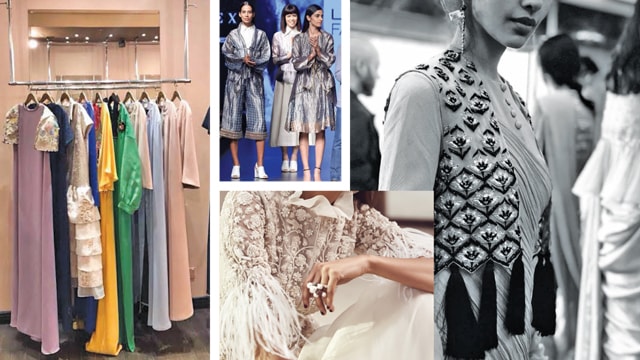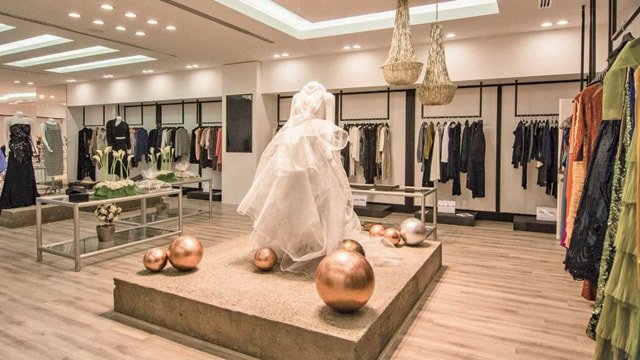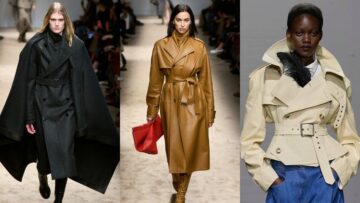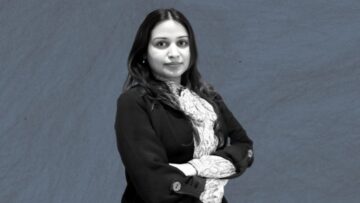For ages, Western modernism and Islamic conservatism have waged war on the topic of fashion liberalization and how it addresses the Muslim community globally. More recently though, the fashion and style sensibilities in this region have been undergoing a renaissance, with an increased number of consumers embracing, and designers providing for more unorthodox ways of dressing.
In our latest expedition to Lakmé Fashion Week Summer Resort 2018, we had the opportunity to interact with a few renowned buyers based out of the Middle East in order to understand the fast evolving Islamic market and their expectation from Indian designers.
There are various reasons that can be attributed to the rise of fashion’s acceptance in the Middle East. This can mean a lot of great things for the Indian fashion industry which shares several cultural values with the region. Perhaps it would not be wrong to say that no other country can understand the Middle East like we can.
The current retail climate and shopping experience is fundamental to the lifestyle and spending habits in the Middle Eastern market which enjoys a greater rate of disposable income. In such a scenario, the touch and feel of a product has become vital, giving rise to many multi-brand fashion retailers as well as individual designer stores.
Gone are the days when it was expected of a woman to don herself in a façade that revealed only her eyes, urging many designers to move away from the all-covered clothing trend.
Speaking of their experience from Lakmé Fashion Week in Mumbai, buyers loved the fabrics and handwork on display, but there was a general discontentment with the trend-aloof quality prevalent across most of the collections.
Retailer-designer collaborations are an upcoming and trending concept in the world of luxury fashion retail. As most retailers revel in loyal customer relations built overtime, a new market has emerged wherein retailers customize collections specific to their client base.
Such collections are exclusive only to the retailer and are made in partnership with designers and brands keeping in mind the kind of styles and details that perform well for the concerned retailer.
A major aspect of this success is collaboration and customized limited edition products. Exclusivity is vital and thus, buyers constantly work out alterations like adding sleeves, colour changes, dropping hemlines and so on. Young designers can keep this in mind and design their specification sheets accordingly with pre-disposed workaround options that address different markets. Translating design concepts to commercially viable retail options and being aware of the global trends is important to win buyers.

Mazin Jawich, Founder of U.G.O, Kuwait, explained saying, “The rise of experiential retail has got us embracing in-store promotional events such as fashion shows and trunk shows every two months. We invite designers to promote their collections, and to interact with our clientele to create custom-made pieces.”
AÏSHTI, a Lebanon-based multi-brand luxury retailer that houses the likes of Gucci, Marc Jacobs, Saint Laurent, Valentino, and Armani among 35+ other mono brands that cater to the fashion segments in the Muslim world, now enjoys its presence across Lebanon, Bahrain, Abu Dhabi, Jordan and Dubai. Wissam Shamy, the Facility Coordinator at AÏSHTI says: “Fashion that you see in Italy is also seen in Lebanon… The modern day woman is open to change and has the confidence to carry off sensual styles that compliment her… This understanding of different customers is crucial for success.”
Because there are disparities within the region itself with places like Lebanon opting for more revealing styles, whereas places such as Kuwait and Saudi Arabia are still in the process of leaving conservative clothing behind, not one formula works for the whole region.
In Lebanon, for instance, the market finds it difficult to carry off typical and traditional Indian clothing with the inclination tilting towards more Indo-western and European styles. The buyers from this region were impressed with the material quality but had a lot of alterations to suggest in terms of cuts, fits going tighter and lengths going shorter. The colour palette working for this market is one comprising of sky blues, navys, greys, blacks, whites and reds.
Saudi Arabia-based retailers such as ‘I Love Hishma’, found the colours, fabrics and silhouettes offered by Indian designers at Lakmé Fashion Week to be in accordance with their brand ideology. Since these areas are dominated by modest fashion clothing, the buyers opted for hand-dyed silks and khadi to be introduced as new trends in their market.
A couple of new buyers at LFW mentioned that there was a lack of consistency/parameters in how different designers were charging for their assortments. The merchandising methods seemed casually placed and they found some pieces to be over-priced and at times, equivalent to what they pay global luxury players. This, they feel, is unjustified given the experience and goodwill the latter holds in the industry.
Indian designers offering handcrafted pieces that are rich in embroidery or embellishments have high price tags attached to their garments which doesn’t ring well for the Middle Eastern consumer who prioritize comfort and functionality over opulence.
Mazin Jawich of United Global Original advised: “Smaller and lesser known designers need to keep their valuation in check when exploring new territory. It is not enough to only like the style; they have to be able to sell it at the end of the day.”
Most designers found designer Ridhi Mehra’s aesthetic to be at par with their market demands. Mehra has garnered recognition for her skill at blending Indian and European influences together to create chic and flattering silhouettes for the modern woman.
Another designer who has been complimented for being at par with Middle-Eastern sensibilities is Mohammed Mazhar who featured under the GenNext category and is an emerging young designer. Mazhar, with his kurtas made using mulmul cotton, cambric and lawn fabrics, scattered with handcrafted bhalwa prints and mocha embroidery, perfectly fell in line with his pricing, colour combinations and fabrics.
Buyers are increasingly appreciating designers who are willing to develop collections according to their market and clientele and India is a red-hot hub for luxury retailers globally. With adequate information on how to deliver competitive pricing, flexible customisations and an international mindset towards trends, Indian brands and designers are sure to flourish in years to come.







